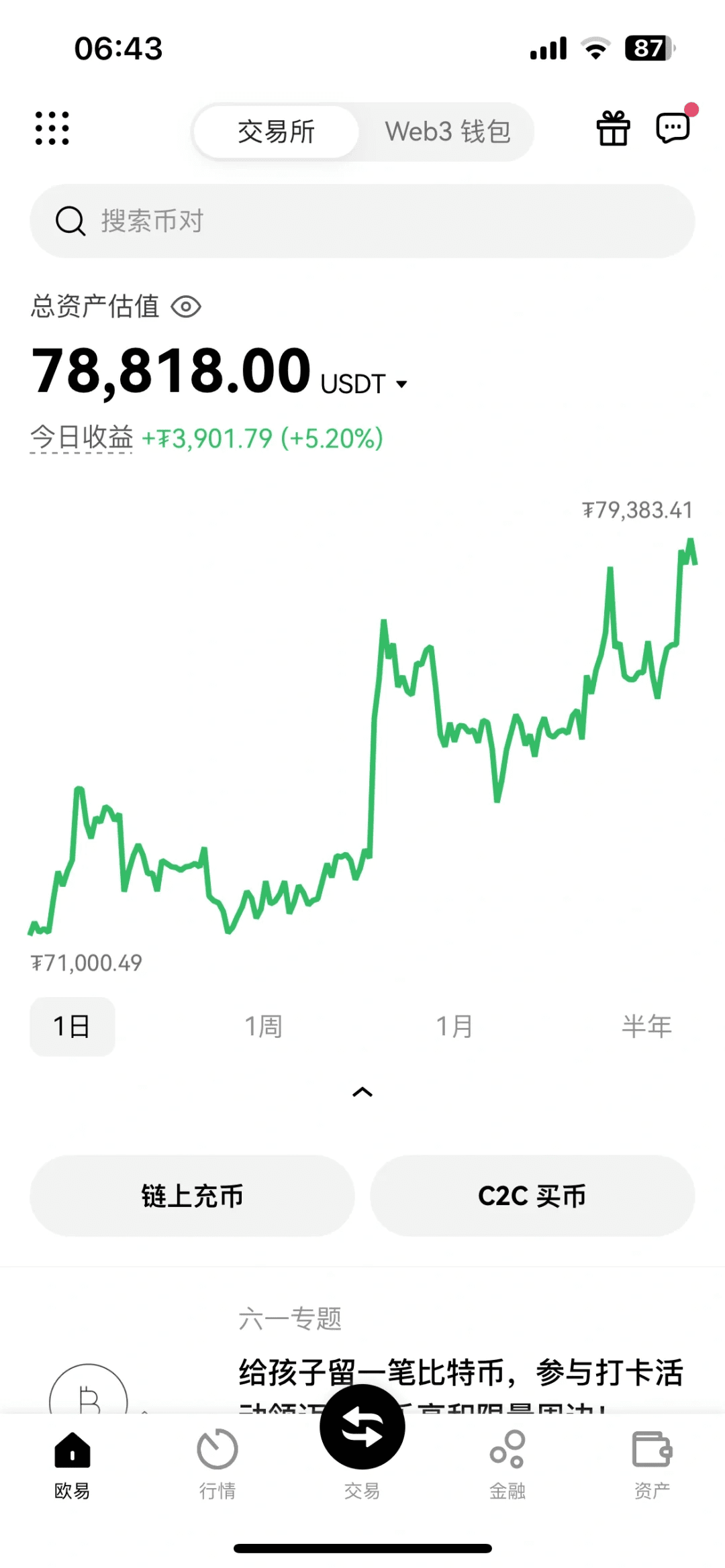One early morning last winter, I sat staring at the zero balance on the exchange for a full three hours. The ashtray was piled high with cigarette butts, and my phone screen still showed the shadow of the last liquidation order — including borrowed funds and interest, I lost nearly 900,000 this time.
I suddenly grabbed the old phone on the table and smashed it against the wall; the glass shards splattered onto my ankle, drawing blood, but I didn't feel a thing.
That night, I deleted all apps with K-line charts, exited all signal groups, and even set up call blocking for my family.
Hiding in the corner of my rental room, staring at the moldy ceiling, I felt for the first time that I really couldn't navigate through this cryptocurrency world.
Until February of this year, I discovered while sorting through an old wallet that there was still 3800U lying in a corner.
Looking at that string of numbers, it felt like something had burned me inside — rather than leaving with regrets, I might as well use this little money for one last gamble. I wrote a line in my notebook: this time, no betting on luck, only sticking to the rules.
I didn't expect that this 3800U not only helped me cover the 900,000 loss but also earned me an additional 300,000.
These are all simple methods that don't seem impressive, but they truly saved me:
1. Install a "safety valve" for your funds.
I divided the 3800U into three parts, stipulating that at any time I would only use up to 35% of my funds. The remaining 65% was set as a "restricted area"; even if I saw a coin skyrocketing, I would not touch a cent. It was like a backup oxygen tank while diving — it should not be touched unless absolutely necessary.
Before each trade, I would first write down my stop-loss point in a memo — if it dropped by 15%, regardless of how optimistic I felt about the market at the time, I would immediately cut the position. There was an instance with an ETH position where it just hit the stop-loss and then rebounded; I watched the screen while crushing three disposable cups in frustration, but I couldn't recover anything. Later, I realized that preserving the principal is ten thousand times more important than catching a single bounce.
2. Only engage in "favorable trades".
I used to think I could predict tops and bottoms, often buying at the peak and shorting at the trough. This time, I completely changed my approach: I would open a 4-hour chart and look for buying opportunities whenever the moving averages were aligned upwards; if the moving averages were slumping downwards, I would focus solely on finding short opportunities.
At the beginning of March, when BNB suddenly surged past its previous high, I entered a long position with half my capital. Watching the profit rise from 200U to 4000U in just 10 minutes made my palms sweat, but I remembered my rules — hold on as long as the trend doesn't reverse. Later, I realized that making money doesn't require any divine foresight; just follow the trend, like rowing a boat with the current, which is easy and safe.
3. Let profits "bear fruit".
After making a profit on each trade, I would immediately transfer 70% of the profits to a cold wallet, converting it into USDT to lock it away. I would reinvest the remaining 30% to keep the cycle going, just like when planting fruit trees: first pick the ripe fruit, then let the new branches continue to bear fruit.
I remember when I turned 3800U into 70,000, I withdrew 50,000 to pay off some debts. Watching the bank notification come through, I suddenly squatted in front of the ATM and cried — it turned out making money doesn't require a big stake; rolling it gradually can also create a big snowball.
From 3800 to 70,000, then to 110,000, not only did I cover over 900,000 in losses, but I also made an additional 300,000 in profit. Without the thrill of leveraging 50 times or catching any hundred-fold coins, I relied on these three simple rules to grind the risks into powder, allowing the profits to grow on their own.
I've seen too many people shout "all in for a comeback" after liquidation, but I know that 99% of the time, it leads to a deeper pit. What the cryptocurrency world lacks is not technical indicators, but someone who can keep your hand steady and help you actually secure your profits.
In the past two months, I helped over 80 friends follow this method; some turned 1200U into 24,000 in 20 days, while others transformed from daily liquidation to a stable monthly withdrawal of 8000U for living expenses. Now that the market is just picking up, the seeds for the next wave of investments have already been sown.
I'm not good with words and can't shout slogans like "it will definitely rise tonight"; all my trading records are out in the open. If you are still carrying last year's loss, don't bear it alone.
If you've experienced liquidation and are still confused in the cryptocurrency world, come talk to me.
Let's recover what we've lost bit by bit; remember, the cryptocurrency world lacks not opportunities, but execution.



